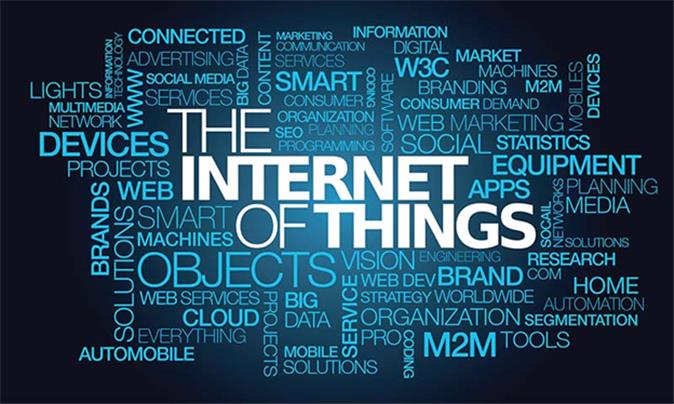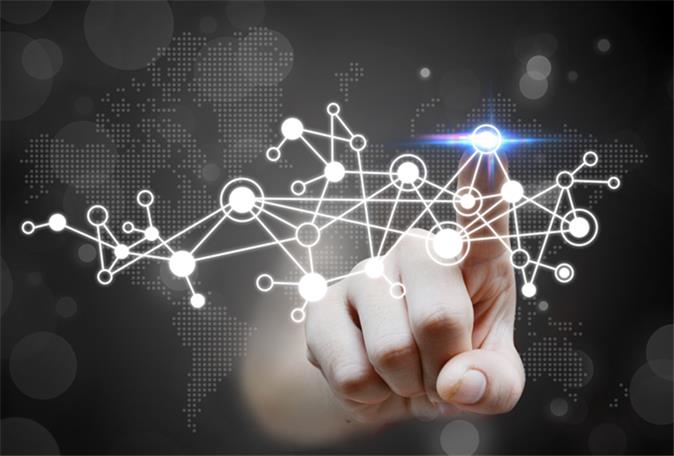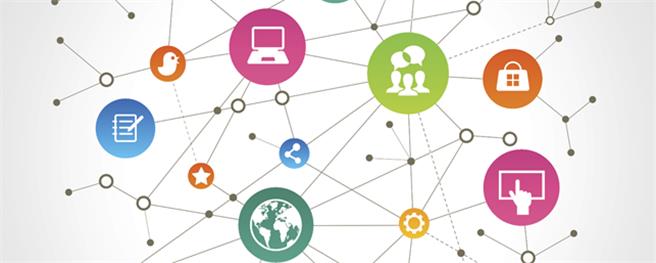Getting Started with the Internet of Things
By Alex Carter on October 2, 2024
IoT is the new trend in the technological domain. This advancement changed how we interact and communicate with the world completely. IoT systems make our daily activities smarter and more efficient.
Many people have heard about this technology but have no idea about its essence. We want to tell you more about its purpose and benefits. Keep reading and learn what you need to get started with the Internet of Things!

What is IoT?
Let’s start with the concept of IoT. Basically, it’s a network of interlinked devices. They distribute data via online channels without human intervention.
How does it work?
These mechanisms gather data from their environment, like
- Temperature;
- Motion;
- Light;
- Humidity, etc.
Then, they transmit this information through communication protocols. They use AI and ML algorithms to process it when it reaches the main system.
Users receive the filtered info through applications. It allows them to monitor or control the gadgets remotely. Automated systems may also initiate actions based on data insights.
We expect even higher adoption of this technology in our daily lives. There are already many improvements in security and protocol standardization.
So, we definitely recommend getting started with the Internet of Things to keep up with trends. Actually, some of the best coding bootcamps already have this technology in their curriculum.
IoT Ecosystem
You have a general understanding of IoT and its working principles. Now let’s talk more about its ecosystem. It’s a complex network of technologies, and you have to know the role of each aspect. There are three primary components.
Hardware
The hardware combines physical devices and sensors that compile and share data. These devices range from small detectors to complex smart appliances and autonomous machines.
What are the main components?
We have sensors that we mentioned a few times already. They gather data from the physical world. We will talk about the main types of these detectors a bit later. Also, there are actuators that perform actions based on processed info.
The next component is edge devices, like
- Gateways;
- Microcontrollers;
- Embedded systems.
They process information at the network edge before getting it to the cloud or a central processing unit.
The last category is smart devices. Those are the actual gadgets people use.
Software
Software is the intelligence behind the IoT ecosystem. It is responsible for organizing and interpreting the collected data.
Here are some things that fall into the software category.
The first one is IoT platforms. They provide tools for
- Device management;
- Data processing;
- Application development.
Next, we have firmware which is a low-level software program. It lets all the devices communicate and function properly.
AI algorithms are also a part of this category. They analyze all the information and automate the decisions.
The last part is the user interface. It includes apps and dashboards that let people engage with the network and control the devices.
Connectivity
Connectivity helps IoT devices communicate with each other and with central systems. Your selection of communication alternatives depends on energy consumption and transfer rate. Standard connectivity options are as follows:
- Wi-fi;
- Bluetooth;
- Cellular;
- LPWAN;
- Zigbee and Z-wave.
Sensors and IoT
As you already know, sensors are the core of IoT systems. They are the starting point of the work. These mechanisms detect and respond to changes in their environment.
Here are the main types of sensors you should know about.
Temperature
These sensors measure temperature variations. They are present in applications, like
- Smart thermostats;
- Industrial automation;
- Healthcare monitoring.
For example, they help maintain optimal conditions in manufacturing processes. Or they allow for constant patient monitoring in healthcare to detect fever or hypothermia.
Proximity
This type helps us detect the presence or absence of objects within a specific range. You can see these sensors in
- Automotive applications for parking assistance;
- Security systems for intrusion detection;
- Industrial robotics for objects.
Proximity sensors function with infrared and capacitive sensing.
Motion
These ones can detect action. They are essential for
- Security systems;
- Smart lighting;
- Wearable fitness gadgets.
PIR sensors are common for home protection to detect human motion. Accelerometers and gyroscopes help monitor physical activity and orientation.
Pressure
These detectors measure pressure changes in gases or liquids. They have applications in
- Industrial automation;
- Weather monitoring;
- Medical devices.
For instance, they can monitor tire pressure to improve safety. Or you can expect them in blood pressure monitors and ventilators.
Light
They measure light intensity. These sensors are often a part of smart lighting systems or smartphone screen brightness adjustments. They depend on photodiodes and photoresistors which let detect changes in ambient light and alter brightness accordingly.
Humidity
These sensors measure the amount of moisture in the air. Their main use cases are
- Agriculture;
- HVAC systems;
- Healthcare.
For example, humidity sensors help optimize irrigation by offering atmospheric moisture data. Plus, they might make indoor environments more comfortable through HVAC.
Main Benefits of IoT
You can’t overstate the impact of IoT devices on our lives. The interconnectivity they offer is really beneficial for many industries. So, let’s talk about the main advantages of this advancement.

Higher Efficiency and Productivity
This technology can automate many tasks and processes. So, there’s lower reliance on manual intervention. You can monitor operations live and optimize resource allocation with its aid.
IoT-powered machines are also helpful in manufacturing. They can communicate with each other and adapt operations dynamically to maximize output.
Cost Savings
This development improves automation and predictive maintenance. This typically results in less operational expenditures. Smart sensors can spot potential breakdowns in equipment before they happen. It minimizes downtime and repair expenses. Plus, energy control systems can help you cut back on electrical power use.
Safety Improvements
IoT improves security through smart surveillance and automated alerts. Its sensors can detect dangerous conditions in work settings and prevent accidents.
Also, smart home security systems use IoT to protect against intrusions. They offer remote access to
- Live camera feeds;
- Automated locks;
- Immediate alarms of suspicious activity.
Better Client Experience
Also, this technology makes customer service more personalized and proactive. Smart devices can predict user needs and offer suitable recommendations.
For example, smart thermostats can learn preferences and modify heat levels automatically.
Retailers frequently use IoT checkout systems and inventory tracking. It allows them to reduce wait times and ensure product availability.
Environmental Advantages
IoT plays a big part in sustainability initiatives. It allows us to manage resources smartly. Smart grids and precision agriculture help lessen waste and improve conservation efforts. Also, connected devices can help you with the following:
- Monitoring air quality;
- Optimizing waste collection;
- Promoting eco-friendly practices.
Use Cases of IoT
The adoption of IoT continues to grow in many industries. This technology improves their productivity and the safety of operations. It makes all our activities smarter and more connected.
We’ve briefly mentioned some examples of IoT usage above. Now, here are some of the top use cases of this development.
Smart Homes
IoT-powered smart homes feature different connected devices, like
- Smart thermostats;
- Lighting systems;
- Security cameras;
- Voice assistants, etc.
These instruments make our lives more convenient through remote control. Plus, they add a layer of protection and improve energy efficiency.
For instance, thermostats can learn your tastes and optimize heating and cooling. IoT security systems let you monitor your properties from anywhere.
Healthcare and Wearable Devices
This technology is transforming the healthcare sector through
- Smart wearables;
- Remote patient monitoring;
- Connected medical devices.
Wearables can track different vital indications. They can monitor heart rate or oxygen levels.
IoT hospital equipment advances patient treatment by supplying accurate dosages and data sharing. Plus, remote patient monitoring helps doctors track chronic disease patients in real time.
Industrial IoT
Industrial IoT is a huge part of smart factories. It gives an opportunity for predictive upkeep and supply chain optimization.
Sensors and connected machinery help detect faults early. It lowers downtime and costs. For instance, predictive maintenance solutions employ ML to analyze equipment performance. It allows them to prevent unexpected failures.
Robotics and automation with IoT improve manufacturing productivity. They lower human mistakes and boost production speed.
Smart Cities
Cities are using IoT systems for different purposes, like
- Traffic control;
- Waste disposal;
- Public safety;
- Energy use, etc.
For example, smart traffic lights can ease congestion. They adjust to vehicle flow data.
Sensors can evaluate air quality and noise pollution. They allow local governments to take steps for environmental safety.
There are also improvements in waste management bin sensors. They facilitate garbage disposal and lower environmental effects.
Smart Farming
IoT solutions in agriculture include precision farming and livestock monitoring. Sensors provide data on
- Soil moisture;
- Weather conditions;
- Crop health.
It allows farmers to optimize resources and increase yields.
Plus, there are automated irrigation systems. They guarantee crops get the right amount of liquid based on weather and soil conditions.
GPS IoT devices help track livestock. It allows for better health monitoring and loss prevention.
Retail and Smart Supply Chains
Retailers also use IoT a lot. This technology helps them with
- Inventory management;
- Smart shelves;
- Customer experience improvements.
Smart shelves have RFID tags and sensors that automatically update inventory levels. They prevent stockouts and overstocking.
IoT-driven supply chains allow them to track goods live. It guarantees better delivery timelines and minimizes losses due to theft or misplacement.

Security for IoT Devices
IoT systems offer tons of advantages for diverse niches. However, they also introduce significant security risks. You have to handle them to protect personal data and critical infrastructure.
The main security threats you might face are the following:
- Weak authentication;
- Unsecured communication channels;
- Outdated or unpatched firmware;
- DDoS attacks;
- Lack of physical security, etc.
So, we strongly recommend using strong passwords and MFA to limit unauthorized access. Also, you have to use encryption protocols to secure data transmission.
Make sure to systematically update software and firmware elements. That way, your devices will receive timely security patches.
Next, it’s important to separate IoT devices from critical company systems and sensitive data networks. It will help you minimize potential attack surfaces.
Plus, you can use IDS and security monitoring tools to detect unusual actions.
Conclusion
We can all agree that IoT technology is our future. So many niches already use it in their processes. This system of interconnected devices simplifies many operations and makes them more productive.
You can use these devices in your daily activities and professional settings. There are so many opportunities! However, keep in mind putting some effort into security.
Hope that our guide was helpful! Don’t be scared of getting started with the Internet of Things. Embrace this innovation and enjoy its benefits.
Posted in blog, Web Applications
Alex Carter
Alex Carter is a cybersecurity enthusiast and tech writer with a passion for online privacy, website performance, and digital security. With years of experience in web monitoring and threat prevention, Alex simplifies complex topics to help businesses and developers safeguard their online presence. When not exploring the latest in cybersecurity, Alex enjoys testing new tech tools and sharing insights on best practices for a secure web.
Web & Cloud
Monitoring
